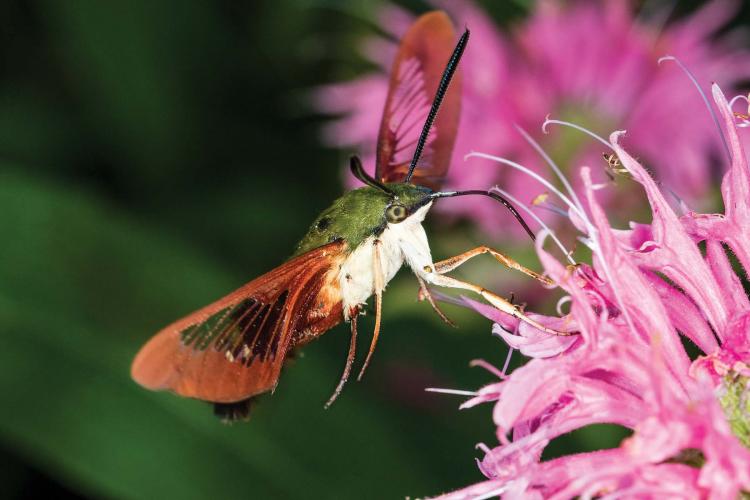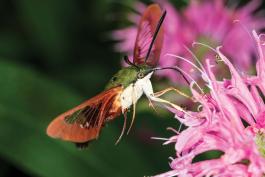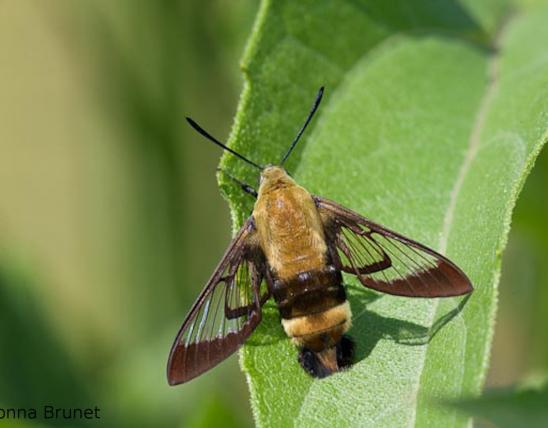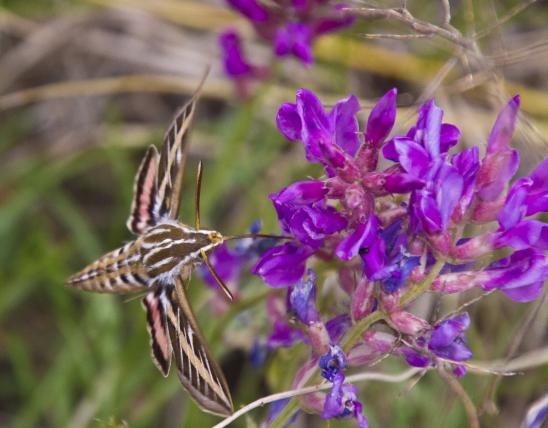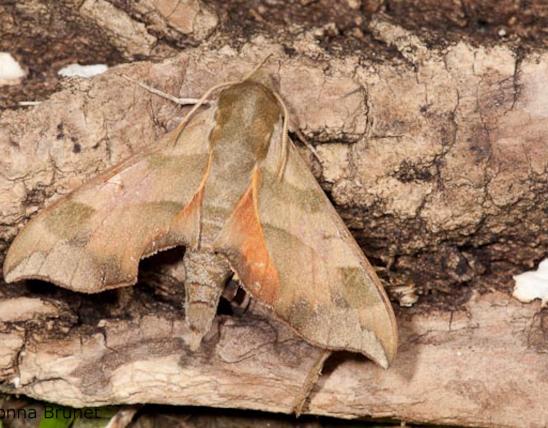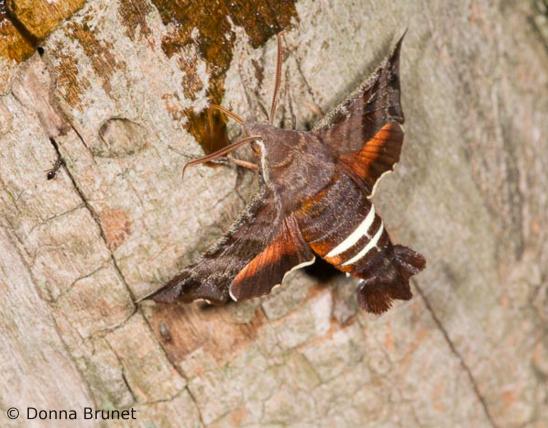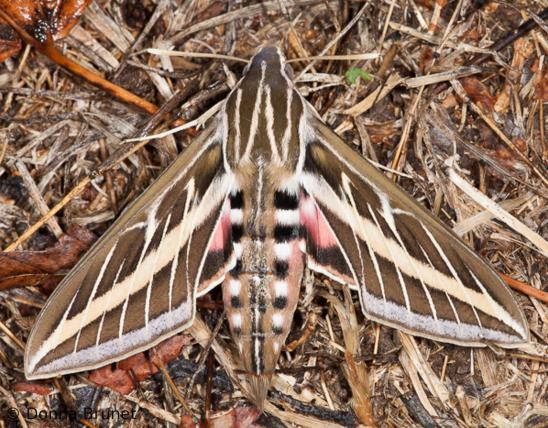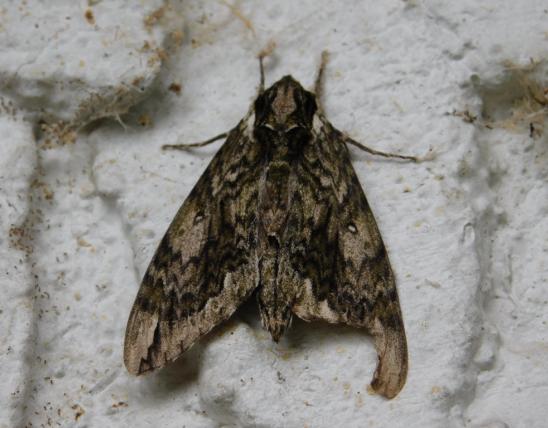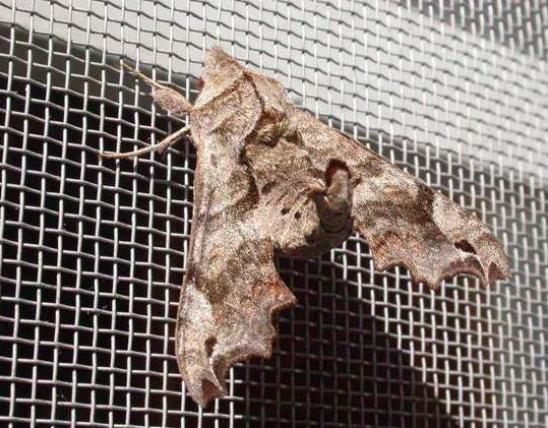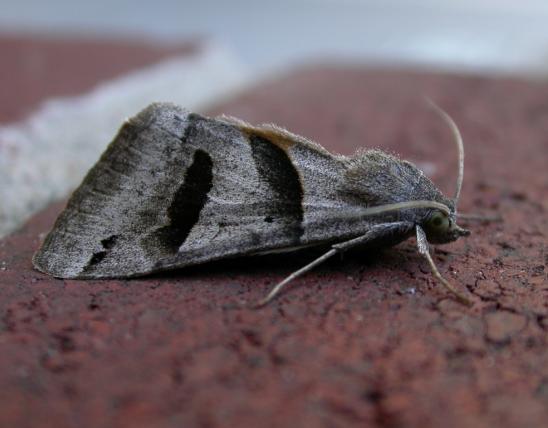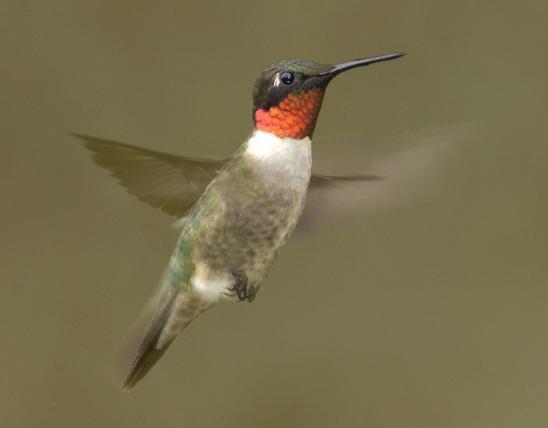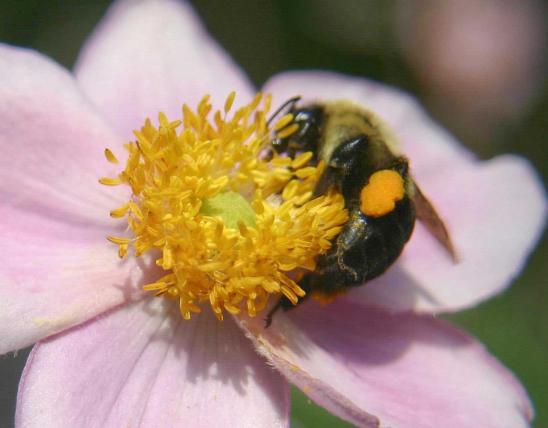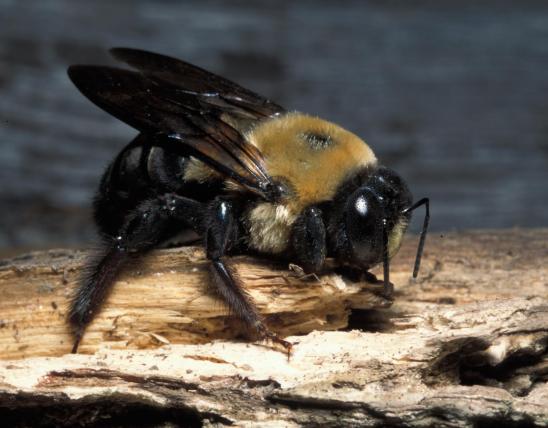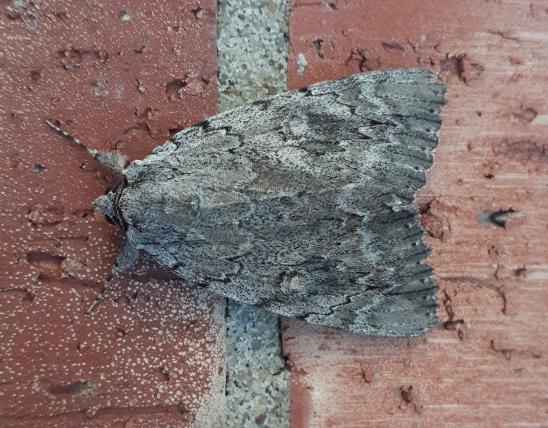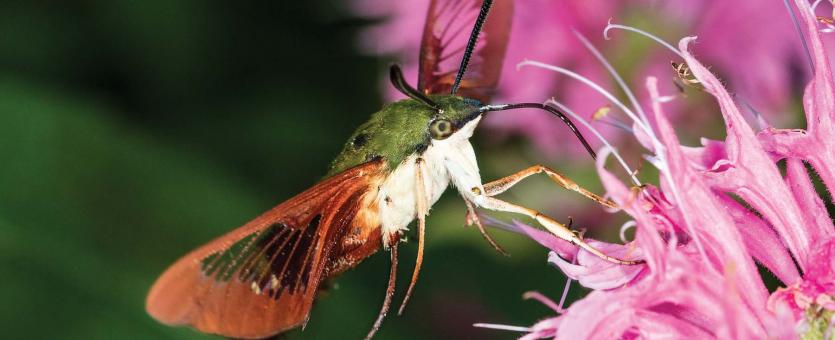
Like other sphinx moths, adult hummingbird clearwings have protruding heads, large eyes, a large, furry thorax, and a conical abdomen that extends well beyond the hindwings when the moth flies. This sphinx moth mimics a bumblebee: The body is fuzzy olive to golden olive above; below, it is whitish in the front part of the body, including the legs, with the abdomen dark burgundy or blackish, with some gold patches above. The wings have large central patches that lack scales and are thus clear. The dark wing edge is relatively wide and the dark marginal scales are reddish brown; the veins are black; and the boundary between the clear area and marginal dark area is uneven or ragged (not smooth or even). The legs are whitish (not black or red). There is no brownish or black banding below the wing base (on the side of the body) or running through the eye and continuing along the side of the thorax.
Caterpillars look different between their various molts. They are granulose (look like they’re covered with tiny bumpy grains), green, with a light-colored line running down each side of the back. Mature ones may look reddish or darker on the back, between the two light-colored lines. The spiracles (which resemble small portholes along the side) are reddish, and the caudal horn (“tail”) may be reddish or light-colored, depending on life stage.
Learn more about sphinx moths as a family on their group page.
Similar species: The description above should help separate the hummingbird clearwing from the similar (and also common) snowberry clearwing (H. diffinis) and the similar (but much less common) slender clearwing (H. gracilis).
Wingspan: 1¾ to 2¼ inches.
Statewide.
Habitat and Conservation
This moth resembles a miniature hummingbird as it hovers in the air over flowers, using its long tongue to probe for nectar. Usually found in open forests and woodlands and in nearby fields. Often seen in flower gardens and suburban yards. Although they are diurnal (active during daytime), they are most frequently noticed at dusk and dawn, as people sit on patio furniture near their flowers that attract these moths.
Food
Larval food plants include many species, including black haw and snowball (Viburnum spp.), buckbrush (coralberry) (Symphoricarpos orbiculatus), and also reported on honeysuckle, snowberry, hawthorns, cherries, and plums.
Adult moths take nectar from a wide range of flowers, particularly ones with long floral tubes, such as honeysuckles, beebalms, clovers, phlox, thistles, and vetches.
Status
A reasonably common species in open wooded areas and nearby fields.
Life Cycle
There are two or three broods in Missouri, with adults flying from early April into September. Females lay eggs on the undersides of leaves of suitable food plants. They overwinter in the soil as pupae.
Human Connections
The species name, thysbe, was inspired by a famous story told by the Roman poet Ovid, who completed his 15-book epic poem The Metamorphoses about the time of Christ. In this story, the tragic lovers Pyramus and Thysbe die bloody deaths starting with a misunderstanding. Pyramus finds a bloody scarf that belonged to Thysbe, assumes she’s dead, then falls on his own sword to kill himself. Thysbe returns, discovers Pyramus’s body, and in her grief kills herself with his sword. This all takes place under a mulberry tree. When the gods hear this sad story, they transform the color of mulberries from white to blood red, to memorialize the sad, bloody scene.
The scientist who named this moth had no doubt read Ovid, and the uneven reddish margins of this moth’s wings might have reminded him of Thysbe’s bloody scarf. One more note: The word metamorphosis means "a change of form." Ovid’s work The Metamorphoses tells stories of transformations (such as the gods transforming the mulberry to commemorate the star-crossed lovers). But most people today know the word metamorphosis as the technical term for an insect’s transformation from a wormy larva into a winged adult.
Ecosystem Connections
This and other insects with bold black-and-yellow patterns on the abdomen are bee mimics. In bees, it’s a warning coloration that tells predators “I can sting you, so leave me alone.” But for species that lack stingers (such as this moth), the coloration provides protection by association.
This moth also looks like a hummingbird. In this case, the insect is probably not “mimicking” a bird, but merely developed the same solutions to similar problems. Both hummingbirds and sphinx moths feed on nectar in deep-throated flowers, and instead of alighting on the flowers with their rather heavy bodies, they hover in the air near the flowers and drink nectar with long mouthparts: bills and tongues in hummingbirds, and proboscises in the moths. The shared olive-green coloration may be a camouflage adaptation that works for both, as they share similar habitats.
